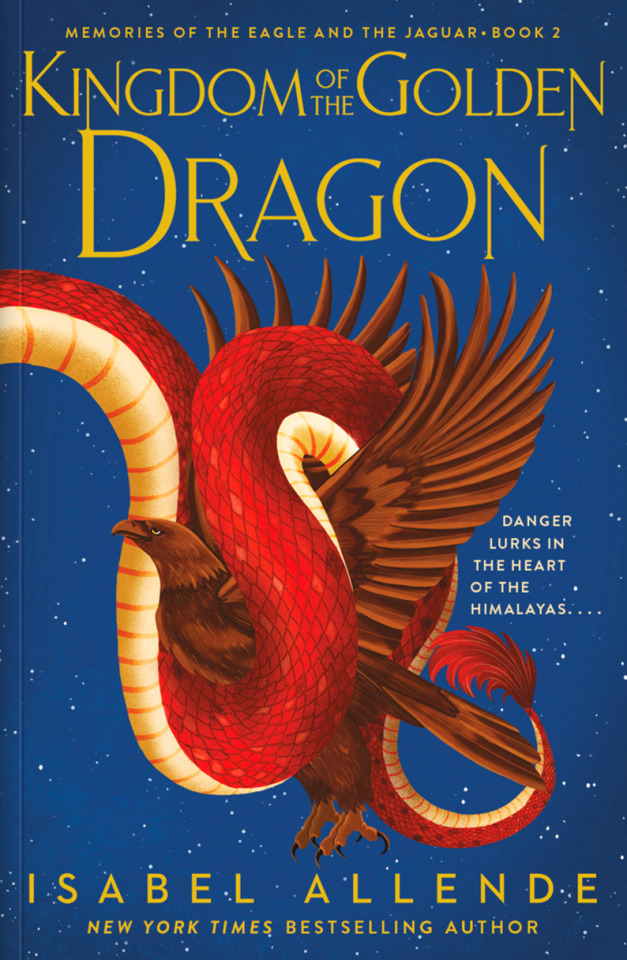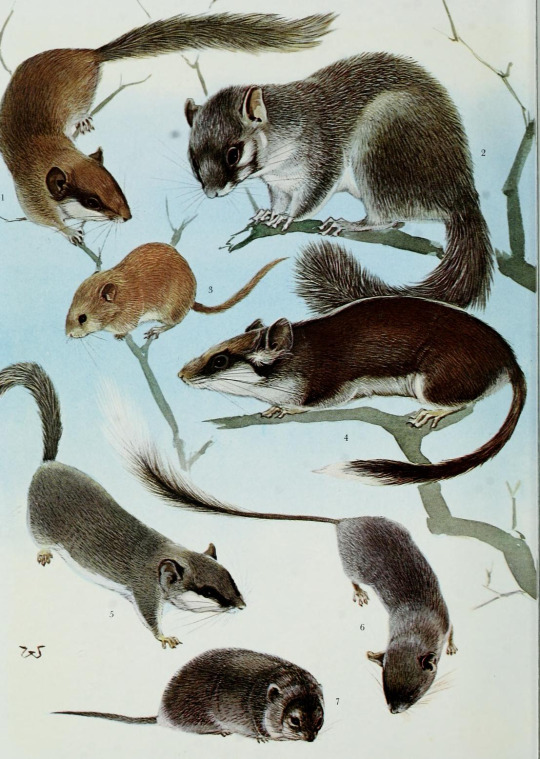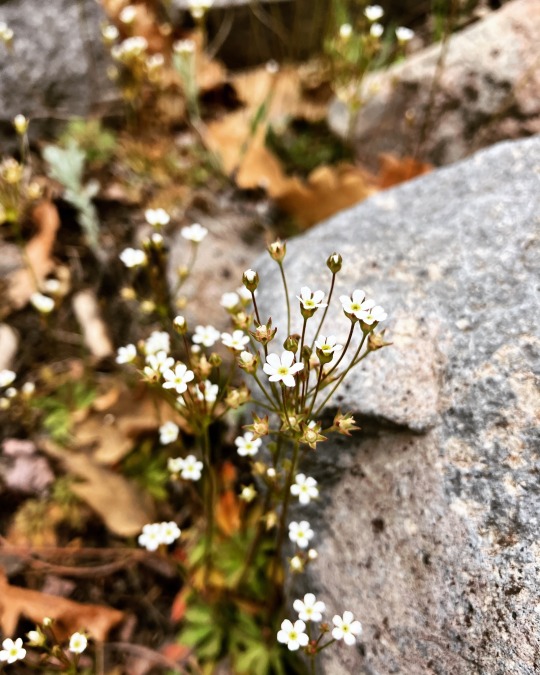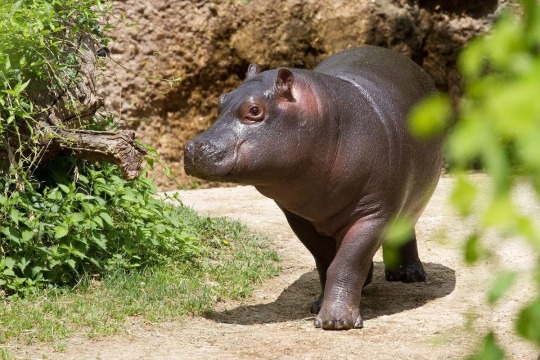#forest of the pygmies
Photo



Micaela Alcaino’s illustrated book covers for Isabel Allende’s Memories of the Eagle and the Jaguar (City of the Beasts, Kingdom of the Golden Dragon, Forest of the Pygmies).
#chilean literature#book covers#isabel allende#micaela alcaino#memories of the eagle and jaguar#city of the beasts#kingdom of the golden dragon#forest of the pygmies
6 notes
·
View notes
Text

[2510/11080] Cloud-forest pygmy owl - Glaucidium nubicola
Order: Strigiformes (owls)
Family: Strigidae (true owls)
Genus: Glaucidium (pygmy owls)
Photo credit: John Cahill via Macaulay Library
115 notes
·
View notes
Text

Grzimek's Animal Life Encyclopedia, vol. 11, Mammals II. 1972.
1.) Forest dormouse (Dryomys nitedula)
2.) European edible dormouse (Glis glis)
3.) Common dormouse (Muscardinus avellanarius)
4.) Garden dormouse (Eliomys quercinus)
5.) Woodland dormouse (Graphiurus murinus)
6.) Chinese pygmy dormouse (Typhlomys cinereus)
7.) Desert dormouse (Selevinia betpakdalaensis)
#rodents#dormice#forest dormice#european edible dormice#common dormice#garden dormice#woodland dormice#chinese pygmy dormice#desert dormice
197 notes
·
View notes
Text
Afrikanpikkuvuohi (Capra aegagrus hircus) African pygmy goat
Przewalskinhevonen (Equus przewalskii) Przewalski's horse
Kulaani (Equus hemionus kulan) Mongolian wild ass
Jakki (Bos grunniens) Yak
Härkägemssi (Budorcas taxicolor) Takin
Karhu (Ursus arctos) Brown bear
Metsäpeura (Rangifer tarandus fennicus) Finnish forest reindeer
Suokukko (Calidris pugnax) Ruff
Kaksikyttyräinen kameli (Camelus bactrianus) Bactrian camel
Berberiapina (Macaca sylvanus) Barbary macaque
#meowth#korkeasaari#african pygmy goat#przewalski's horse#mongolian wild ass#yak#takin#brown bear#finnish forest reindeer#ruff#bactrian camel#barbary macaque#pokemon#my pokemon
9 notes
·
View notes
Text

#nature#mountains#hiking#landscape#new mexico#forest#los alamos#wildflowers#flowers#Pygmy flower rock jasmine
13 notes
·
View notes
Photo

Is that a mouse?🐭 Guess again: This pocket-sized critter is the western pygmy possum! (Cercartetus concinnus). One of the world’s smallest possums, this species typically weighs just 0.5 oz (13 grams)— the size of an AA battery. This dainty marsupial is a nectivore, meaning that its diet consists primarily of plant nectar. It inhabits treetops in forests throughout parts of southern Australia, using its long prehensile tail like a fifth limb as it moves from branch to branch. Photo: latcho, CC BY-NC 4.0, iNaturalist #nature #animals #amazinganimals #natureisawesome #wildlife https://www.instagram.com/p/CpiJrz6NSbo/?igshid=NGJjMDIxMWI=
1K notes
·
View notes
Text

February 10, 2024 - Peruvian Pygmy-Owl (Glaucidium peruanum)
Found in parts of Ecuador, Peru, and northern Chile, these small owls live in forests, sometimes near rivers, scrub, agricultural areas, gardens, and towns. Though the details of their diet are not known, it is likely made up of large invertebrates and small vertebrates, including moths, beetles and their larvae, frogs, and birds. They nest in tree cavities, old hornero nests, and possibly holes in walls and river banks, though little else is known about their breeding behavior.
#peruvian pygmy-owl#owl#raptors#glaucidium peruanum#bird#birds#illustration#art#grassland#birblr art
120 notes
·
View notes
Text

Pygmy hippopotamus (Choeropsis liberiensis)
Hippos are often thought of as savanna animals, but the pygmy hippopotamus is adapted to live in the jungles of Western Africa. It can be thought of as a sort of combination of the common hippo and a forest hog or tapir. By day they rest in water in secluded parts of the forest. At night, they go out foraging for food, including ferns, fruits, and basically any other plants close to the ground. They might be called pygmy hippos, but their size is still nothing to scoff at!
#markhors-menagerie#animal facts#animals#biology#fun facts#ungulates#even toed ungulates#pigs hippos & kin#hippopotamus#Pygmy hippopotamus
86 notes
·
View notes
Text
Please reblog for a bigger sample size!
If you have any fun fact about Cameroon, please tell us and I'll reblog it!
Be respectful in your comments. You can criticize a government without offending its people.
55 notes
·
View notes
Text
Fossil Novembirb: Day 16 - Among The Giants

During the Oligocene epoch, 33-23 million years ago, the landscape of Mongolia was as endlessly vast and wild as today. Forests were rare in this part of the world, instead there were shrublands, savannahs and deserts there. This landscape was the realm of giants, like the Paraceratherium of Walking With Beasts fame. Birds were also living in this land of giants, and some were already adapting to it.
Heterostrix: A small early owl, roughly the size of modern pygmy owls. But despite its small size, it was a capable predator of large insects, lizards and mammals, even birds as large as itself.
Agnopterus: One of the earliest known true flamingoes. Little is known of this bird, but it likely fed on tiny crustaceans filtered from the water, as do modern flamingoes.
Sonogrus: One of the flightless paleognath birds that was closely related to ostriches. This fleet footed herbivore belonged to the group known as paragruids.
Ergilornis: Another stem-ostrich in the group known as ergilornithids. The inner toe of these birds was reduced in size to allow for more efficient running.
Caspiodontornis: One of the few pelagornithids known from Asia, this pseudotoothed giant flew above the remnants of the ancient Tethys Sea.
#Fossil Novembirb#Novembirb#Dinovember#birblr#palaeoblr#Birds#Dinosaurs#Cenozoic Birds#Heterostrix#Agnopterus#Sonogrus#Ergilornis#Caspiodontornis
59 notes
·
View notes
Text
I would like to offer this resource for therians, an extensive list of all of Sir David Attenborough’s nature documentaries that are available on soap2day, and a full list of what species* they each (notably, prominently) feature the natural behaviors of, separated by episode, and omitting species that were only shown dead, juvenile or being predated on. This took me a while (I have been working on it since Prehistoric Planet’s release) because I did in fact have to watch every single series in full in order to list all the species and the episodes are around 50 minutes long, but enjoy.
Long post ahead:
Most of these shows have closed captioning, which is why I’ve picked soap2day. Planet Earth is the only one that doesn’t. I did not include Dynasties and Dynasties II because each episode only features one species.
Thank you to Birch (@ambiguousmutt) for his help (he watched about half of the episodes) so I didn’t have to do it individually. Credit goes to him as well.
*Sometimes Attenborough doesn’t say the specific species and I was too busy trying to get through the episodes to identify it. In those cases I just put the most specific name I could.
Planet Earth
Episode one (From Pole to Pole): emperor penguin, polar bear, caribou, arctic grey wolf, Amur leopard, six-plumed bird-of-paradise, superb bird-of-paradise, great white shark, African elephant, African buffalo, lechwe, baboon, African wild dog
Episode two (Mountains): gelada, walia ibex, Ethiopian wolf, guanaco, cougar, grizzly bear, markhor, snow leopard, golden eagle, grey wolf, panda, golden snub-nosed monkey, red panda, demoiselle crane
Episode three (Fresh Water): giant salamander, grizzly bear, smooth-coated otter, Nile crocodile, dolphin fish, midge, Amazon river dolphin, dorado, piranha, spectacled caiman, crab-eating macaque, snow goose
Episode four (Caves): wrinkle-lipped free-tailed bat, cockroach, bat hawk, cave swiftlet, yellow-red rat snake, Texas blind salamander
Episode five (Deserts): Bactrian camel, dromedary camel, red kangaroo, fennec fox, guanaco, long-nosed bat, Nubian ibex, flat lizard, lion, African elephant, locust
Episode six (Ice Worlds): snow petrel, Antarctic petrel, south polar skua, humpback whale, emperor penguin, eider, muskox, arctic grey wolf, polar bear, little auk, arctic fox
Episode seven (Great Plains): Mongolian gazelle, red-billed quelea, wildebeest, snow goose, arctic fox, arctic grey wolf, bison, wild ass, Tibetan fox, pygmy hog, African elephant, lion, baboon
Episode eight (Jungles): magnificent bird-of-paradise, spider monkey, howler monkey, siamang gibbon, gliding tree frog, colugo, red crab spider, African elephant, chimpanzee
Episode nine (The Shallow Seas): humpback whale, multiple corals, banded sea krait, trevally, dugong, bottlenose dolphin, Socotra cormorant, salp, comb jelly, sea lion, dusky dolphin, sea urchin, sunflower starfish, short-tailed stingray, great white shark, king penguin, fur seal
Episode ten (Seasonal Forests): Eurasian lynx, moose, crossbill, wolverine, western capercaillie, pine marten, great grey owl, pudu, kodkod, mandarin duck, cicada, red deer, Amur leopard, tiger, mouse lemur
Episode eleven (Ocean Deep): whale shark, oceanic whitetip shark, common dolphin, Cory's shearwater, manta ray, sea spider, vampire squid, spider crab, unnamed deep sea eel, giant isopod, chambered nautilus, Pacific spotted dolphin, mola mola, frigatebird, sailfish, blue whale
Planet Earth II
Episode one (Islands): pygmy three-toed sloth, Komodo dragon, sifaka, marine iguana, Galapagos racer, Buller's albatross, fairy tern, Christmas Island red crab, yellow crazy ant, chinstrap penguin
Episode two (Mountains): Nubian ibex, red fox, golden eagle, grizzly bear, bobcat, flamingo, mountain viscacha rat, snow leopard
Episode three (Jungles): spider monkey, flying lizard, sword-billed hummingbird, river dolphin, jaguar, glass frog, paper wasp, click beetle, red bird of paradise, Wilson's bird of paradise, indri
Episode four (Deserts): lion, Harris's hawk, shrike, locust, sand grouse, pale chanting goshawk, feral mustang, golden mole, desert long-eared bat, darkling beetle, Namaqua chameleon
Episode five (Grasslands): saiga antelope, lion, harvest mouse, carmine bee-eater, Kori bustard, African elephant, serval, Jackson's widowbird, grasscutter ant, compass termite, giant anteater, bison, red fox, arctic grey wolf
Episode six (Cities): langur, peregrine falcon, leopard, European starling, great bowerbird, raccoon, rhesus macaque, spotted hyena, wels catfish
Our Planet
Episode one (One Planet): lesser flamingo, orchid bee, golden-collared manakin, red-capped manakin, blue manakin, cormorant, booby, common dolphin, shearwater, African wild dog, timber wolf
Episode two (Frozen Worlds): gentoo penguin, wandering albatross, narwhal, Pacific walrus, humpback whale, orca, leopard seal, polar bear
Episode three (Jungles): lowland gorilla, forest elephant, black sicklebill, twelve-wired bird-of-paradise, western parotia, mountain treeshrew, Philippine eagle, black spider monkey, leafcutter ant, Sumatra orangutan, velvet worm
Episode four (Coastal Seas): northern fur seal, compass jellyfish, giant trevally, mobula ray, Atlantic stingray, bottlenose dolphin, grey reef shark, whitetip reef shark, sea otter, California sheephead wrasse, Steller's sea lion, bald eagle, humpback whale, Guanay cormorant, Inca tern, Peruvian booby, South American sea lion
Episode five (From Deserts to Grasslands): Socotran cormorant, Arabian leopard, Arabian oryx, African elephant, cheetah, bison, Alcon blue butterfly, saiga, Przewalski's wild horse, tiger
Episode six (The High Seas): blue whale, spinner dolphin, mobula ray, oarfish, anglerfish, bristle worm, giant petrel, black-browed albatross, wandering albatross, bluefin tuna, sea lion, humpback whale
Episode seven (Fresh Water): Australian pelican, torrent duck, grizzly bear, manatee, giant mayfly, common kingfisher, osprey, jaguar, callipterus cichlid, Siamese fighting fish, hippopotamus, lion, African elephant, sandhill crane
Episode eight (Forests): Siberian tiger, bald eagle, rough-skinned newt, great hornbill, African elephant, African wild dog, fossa, gray mouse lemur
A Perfect Planet
Episode one (Volcano): lesser flamingo, marabou stork, Galápagos land iguana, vampire ground finch, Aldabra giant tortoise, North American river otter, coyote, Kamchatka brown bear, wildebeest
Episode two (The Sun): yellow-cheeked gibbon, fig wasp, arctic grey wolf, wood frog, garter snake, arctic fox, Saharan silver ant, golden snub-nosed monkey, sooty shearwater, humpback whales
Episode three (Weather): straw-colored fruit bat, fire ant, Amazonian giant river turtle, desert rain frog, Bactrian camel, Christmas Island red crab, carmine bee-eater, Nile crocodile, African fish eagle, hippopotamus
Episode four (Oceans): common dolphin, marine iguana, flightless cormorant, flamboyant cuttlefish, eider, bottlenose dolphin, lemon shark, manta ray, blacktip reef shark, trevally, rockhopper pengin, Eden's whale
Episode five (Humans): none
Life
Episode one (Challenges of Life): bottlenose dolphins, cheetah, panther chameleon, orca, brown-tufted capuchin, stalk-eyed fly, hippopotamus, Clark's grebe, giant Pacific octopus, strawberry poison-dart frog, leopard seal, orangutan
Episode two (Reptiles and Amphibians): pebble toad, caiman, basilisk, Brazilian pygmy gecko, panther chameleon, Namaqua chameleon, red-sided garter snake, collared iguana, hog-nosed snake, horned lizard, sea krait, African bullfrog, Komodo dragon
Episode three (Mammals): Weddell seal, elephant shrew, aye-aye, caribou, straw-colored fruit bat, lion, spotted hyena, polar bear, brown-nosed coati, meerkat, African elephant, humpback whale
Episode four (Fish): sailfish, flying fish, weedy sea dragon, convict fish, sarcastic fringehead, mudskipper, Hawaiian freshwater goby, hippopotamus, barbel, silvertip shark, clownfish, sea lion, ragged tooth shark, multiple snapper, whale shark
Episode five (Birds): spatuletail hummingbird, lammergeier, red-billed tropicbird, magnificent frigatebird, red knot, horseshoe crab, lesser flamingo, chinstrap penguin, great white pelican, Clark’s grebe, sage grouse, Vogelkop bowerbird
Episode six (Insects): Darwin’s beetle, unnamed damselfly, monarch butterfly, alkali fly, Wilson’s phalarope, oogpister beetle, mongoose, bombardier beetle, honey bee, black bear, Japanese red bug, Dawson’s bee, grass cutter ant
Episode seven (Hunters and Hunted): ibex, short-tailed stoat, brown bear, Ethiopian wolf, California ground squirrel, star-nosed mole, cheetah, red fox, greater bulldog bat, bottlenose dolphin, Bengal tiger, rattlesnake, orca
Episode eight (Creatures of the Deep): Pompeii worm, Humboldt squid, nemertean worm, moon jelly, fried egg jellyfish, spider crab, stingray, cuttlefish, giant Pacific octopus, sunflower sea star, king crab, cleaner shrimp
Episode nine (Plants): monarch butterfly, purple-throated carib hummingbird
Episode ten (Primates): Hamadryas baboon, Japanese macaque, lowland gorilla, spectral tarsier, phayre's leaf monkey, ring-tailed lemur, Sumatra orangutan, chacma baboon, white-faced capuchin, brown-tufted capuchin, western chimpanzee
Blue Planet II
Episode one (One Ocean): bottlenose dolphin, tuskfish, tern, giant trevally, mobula ray, false killer whale, Asian sheepshead wrasse, orca, humpback whale, walrus
Episode two (The Deep): sea toad, Venus’ flower basket, unnamed shrimp, ethereal snailfish, cock-eyed squid, pyrosome, barrel-eyed fish, unnamed siphonophore, yeti crab, Humboldt squid, fangtooth fish, sixgill shark, scabbardfish, zombie worm
Episode three (Coral Reefs): broadclub cuttlefish, coral grouper, day octopus, multiple corals, green turtle, bottlenose dolphin, manta ray, bobbit worm, saddleback clownfish, marbled grouper, grey reef shark
Episode four (Big Blue): spinner dolphin, yellowfin tuna, mobula ray, sailfish, sperm whale, sea turtle, blue shark, great white shark, multiple jellyfish, Portuguese man o' war, whale shark, wandering albatross, shortfin pilot whale
Episode five (Green Seas): Garibaldi, Australian giant cuttlefish, weedy seadragon, common octopus, pyjama shark, sea otter, tiger shark, smooth stingray, zebra mantis shrimp, common dolphin, humpback whale
Episode six (Coasts): Pacific leaping blenny, king penguin, southern elephant seal, Sally Lightfoot crab, Galápagos sea lion, ochre starfish, clingfish, chain moray eel, Atlantic puffin, arctic skua
Episode seven (Our Blue Planet): none
Prehistoric Planet
Episode one (Coasts): Tyrannosaurus rex, Tethydraco, Phosphatodraco, Tuarangisaurus, Mosasaurus hoffmannii, pycnodont fish, ammonites, Kaikaifilu
Episode two (Deserts): Dreadnoughtus, Tarbosaurus, Velociraptor, Mononykus, Barbaridactylus, Secernosaurus
Episode three (Freshwater): Velociraptor, Tyrannosaurus rex, Deinocheirus, Quetzalcoatlus, Masiakasaurus, Beelzebufo, elasmosaur
Episode four (Ice Worlds): dromaeosaur, hadrosaur, Ornithomimus, Olorotitan, troodontid, Antarctopelta, Pachyrhinosaurus, Nanuqsaurus
Episode five (Forests): Austroposeidon, Triceratops, Carnotaurus, Qianzhousaurus, Edmontosaurus, Atrociraptor, Anodontosaurus, Therizinosaurus, Telmatosaurus, Hatzegopteryx
The Hunt
Episode one (The Hardest Challenge): African leopard, African wild dog, Parson’s chameleon, nose-horned chameleon, African mantis, Darwin’s bark spider, Nile crocodile, Amur falcon, orca, cheetah
Episode two (Arctic): polar bear, arctic grey wolf, arctic fox, glaucous gull
Episode three (Forests): tiger, American marten, sparrow hawk, Portia spider, tarsier, harpy eagle, chimpanzee, army ant
Episode four (Oceans): blue whale, frigatebird, dorado, sargassum fish, spinner dolphin, Beroe ovata, Chiroteuthis, lionfish, black-browed albatross, sea lion, tuna, copper shark, common dolphin, Bryde's whale
Episode five (Plains): cheetah, caracal, honey badger, termite, bald eagle, lion, Ethiopian wolf, hotrod ant, spoor spider
Episode six (Coasts): bottlenose dolphin, algae octopus, sand bubbler crab, long-tailed macaque, marine otter, grizzly bear, grey wolf, peregrine falcon, orca, humpback whale
Episode seven (Conservation): none
Life In Colour
Episode one (Seeing In Color): Indian peafowl, mandrill, Costa’s hummingbird, magnificent bird-of-paradise, blue moon butterfly, fiddler crab, mantis shrimp, flamingo, poison dart frog
Episode two (Hiding In Color): Bengal tiger, langur, ptarmigan, crab spider, zebra, Cuban painted snail, blue-striped fangblenny, common waxbill, pin-tailed wydah, Augrabies flat lizard
Frozen Planet II
Episode one (Frozen Worlds): emperor penguin, orca, Pallas’s cat, Siberian tiger, grizzly bear, hooded seal, polar bear
Episode two (Frozen Ocean): polar bear, beluga, harp seal, skeleton shrimp, crested auklet, orca
Episode three (Frozen Peaks): high-casqued chameleon, japanese macaque, kea, andean flamingo, giant panda, golden eagle, andean mountain lion
Episode four (Frozen South): king penguin, Antipodean wandering albatross, blue whale, Weddell seal, chinstrap penguin, snow petrel, leopard seal, orca
Episode five (Frozen Lands): grey wolf, arctic fox, Amur leopard, Siberian tiger, painted turtl, Lapland bumblebee, snowy owl, caribou, grizzly bear
Episode six (Our Frozen Planet): none
Africa
Episode one (Kalahari): fork-tailed drongo, ostrich, black rhinoceros, Angolan giraffe, African leopard, armored ground cricket, spider wasp
Episode two (Savannah): Agama lizard, shoebill, bee-eaters and rollers, lesser flamingo, African elephant, crowned eagle, African fish eagle, martial eagle
Episode three (Congo): chimpanzee, central African rock python, Angola banana frog, African skimmer, rockfowl, African elephant
Episode four (Cape): emperor swallowtail, giant kingfish, African penguin, monkey beetle, springbok, yellow-billed kite, pied crow, ghost crab, vundu catfish, Nile crocodile, Bryde’s whale, great white shark, common dolphin
Episode five (Sahara): Grevy’s zebra, naked mole rat, barn swallow, Dromedary camel, dung beetle, crocodile, western yellow wagtail, Saharan silver ant
Episode six (The Future): none
521 notes
·
View notes
Text

Grzimek's Animal Life Encyclopedia, vol. 11, Mammals II. 1972.
1.) Forest giant squirrel (Protoxerus stangeri)
2.) Ebian's palm squirrel (Epixerus ebii)
3.) Zanj sun squirrel (Heliosciurus undulatus)
4.) Black-eared squirrel (Nannosciurus melanotis)
5.) Swinhoe's striped squirrel (Tamiops swinhoei)
6.) Perny's long-nosed squirrel (Dremomys pernyi)
7.) Three-striped ground squirrel (Lariscus insignis)
8.) African pygmy squirrel (Myosciurus pumilio)
9.) Congo rope squirrel (Funisciurus congicus)
10.) Striped bush squirrel (Paraxerus flavovittis)
11.) Malayan giant squirrel (Ratufa bicolor)
12.) Cape ground squirrel (Geosciurus inauris)
#rodents#squirrels#forest giant squirrel#ebian's palm squirrel#Zanj sun squirrel#black-eared squirrel#Swinhoe's striped squirrel#Perny's long-nosed squirrel#three-striped ground squirrel#African pygmy squirrel#Congo rope squirrel#striped bush squirrel#malayan giant squirrel#cape ground squirrel
221 notes
·
View notes
Photo

Legends and myths about trees
Forest spirits and natives (3)
Menehune - Legendary dwarves who live in the deep forests of Hawaii
Menehune are a mythological race of dwarf people in tradition who are said to live in the deep forests and hidden valleys of the Hawaiian Islands, hidden and far away from human settlements.
The Menehune are described as superb craftspeople. They built temples (heiau), fishponds, roads, canoes, and houses. Some of these structures that Hawaiian folklore attributed to the Menehune still exist. They are said to have lived in Hawaii before settlers arrived from Polynesia many centuries ago. Their favorite food is the maiʻa (banana), and they also like fish. Legend has it that the Menehune appear only during the night hours to build masterpieces. But if they fail to complete their work in the length of the night, they’ll leave it unoccupied. No one but their children and humans connected to them can see the Menehune.
While archaeologists have never found remains of a distinctively small race of ancient people in Hawaii, many think the Menehune legend may well have a basis in fact. In 2003, a species of dwarf human was discovered on the Indonesian island of Flores. Homo floresiensis was only about 1 meter in height and fully bipedal. The skull has human-like teeth with a receding forehead and no chin.
Fossils have been discovered from 38,000 to 18,000 years ago, though archeological evidence suggests it lived on Flores between at least 95,000 and 13,000 years ago. It used stone tools and fire, and hunted pygmy elephants, Komodo dragons, and the giant rats found on Flores. Its discoverers believe that h. floresiensis is a dwarf form of Homo erectus. It is not uncommon for dwarf forms of large mammals to evolve on islands. Modern humans arrived on Flores between 55,000 and 35,000 years ago, and presumably interacted with h. floresiensis (Refrence: “The Three Menehune of Ainahou (Maui)” by Charles Kauluwehi Maxwell Sr).

木にまつわる伝説・神話
森の精霊たちと原住民 (3)
メネフネ 〜 ハワイの深い森に住む伝説の小人族
メネフネとは、ハワイに伝わる神話上の小人族で、ハワイ諸島の深い森や隠れた谷に住み、人里から遠く離れたところに住んでいると言われている。
メネフネ族は、優れた職人で、神殿 (ハワイ語:ヘイアウ)、養魚池 (メネフネ養魚池)、道路、カヌー、家などを建設した。ハワイの民間伝承では、メネフネのものとされるこれらの建造物は、今でもいくつか残っている。彼らは、何世紀も前にポリネシアから入植者たちがやってくる以前からハワイに住んでいたと言われている。好物はバナナ (ハワイ語: マイア) で、魚も好物である。伝説によると、メネフネたちは夜の間だけ現れ、傑作を作り上げると言われている。しかし、夜の長さの中で作品を完成させることができなければ、その作品は無人のまま放置される。彼らの子供と彼らにつながることが出来る人間以外には、メネフネを見ることはできない。
ハワイでは、考古学者が小人類の遺跡を発見したことはないが、メネフネ伝説には根拠があると考える人は多い。2003年、インドネシアのフローレス島で、小人の一種が発見された。ホモ・フロレシエンシスは、身長が1メートルほどしかなく、完全な二足歩行であった。頭蓋骨には人間のような歯があり、額は後退し、顎はない。
3万8000年前から1万8000年前の化石が発見されているが、考古学的な証拠から、少なくとも9万5000年前から1万3000年前まではフローレス島に住んでいたと考えられている。石器や火を使い、ボルネオ象やコモドドラゴン、フローレス島に生息する巨大ネズミを狩っていた。発見者たちは、ホモ・エレクトスの小人型であると信じている。大型哺乳類の矮小型が島で進化するのは珍しいことではない。現生人類は、5万5千年前から3万5千年前の間にフローレス島に到着し、ホモ・エレクトスと交流があったと推定される (参考文献: チャールズ・クルウェヒ・マックスウェル・シニア著「アイナホウ(マウイ島)の3人のメネフネ」より)。
#trees#tree legend#tree myth#legend#mythology#folklore#menehune#hawaiian folklore#dwarf#menehune fishpond#banana#nature#art
145 notes
·
View notes
Note
I searched up weird forest animals and I found a Pygmy Marmoset
They’re a type of monkey I think
And they are adorableeee

While I don't respond to the pet suggestions and just note them down, THIS ONE IS SO ADORABLE 🥺🥺 baby monkey you will certainly be an option!
41 notes
·
View notes
Text
(for context, the Mbuti are hunter-gatherer pygmies in the congo rainforest. they live in the forest itself, while the "villagers", bantu people, farm in spaces cleared from the forest, they have a complex interdependence)
Some Mbuti have learned to use matches, when available, and a few know of the fire drill from contact with their village neighbors. There is absolutely no indigenous method of making fire, however, and it is a point of no small importance to their social life that each household maintains its own hearth. Embers from this hearth are carried, usually by the woman, wrapped in fire-resisant leaves, during the hunt or while on the trail. At each new camp site, the family hearths are kindled from embers of the old family hearths, preserving a distinct sense of continuity. Whenever a communal hearth is required, as for the molimo, communal participation is accentuated by the compulsory contribution of embers from each family hearth. Whereas matches are rarely used, becoming quickly damp and useless, even if available, they are never used for kindling family or communal hearths, but only for such relatively mundane purposes as lighting a pipe or cigarette.
Wayward Servants, the two worlds of the Mbuti, Turnbull
64 notes
·
View notes
